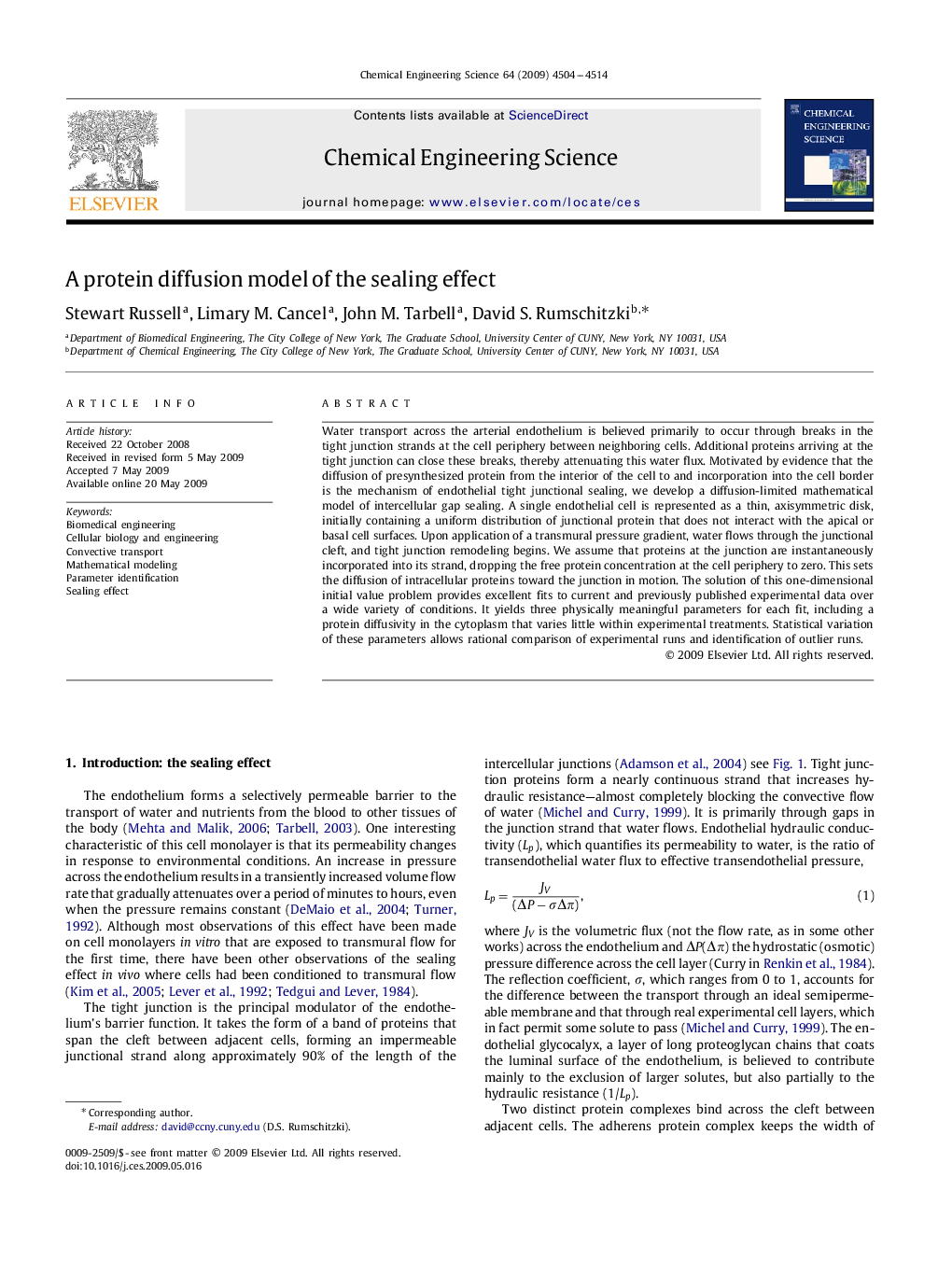| کد مقاله | کد نشریه | سال انتشار | مقاله انگلیسی | نسخه تمام متن |
|---|---|---|---|---|
| 157325 | 456969 | 2009 | 11 صفحه PDF | دانلود رایگان |

Water transport across the arterial endothelium is believed primarily to occur through breaks in the tight junction strands at the cell periphery between neighboring cells. Additional proteins arriving at the tight junction can close these breaks, thereby attenuating this water flux. Motivated by evidence that the diffusion of presynthesized protein from the interior of the cell to and incorporation into the cell border is the mechanism of endothelial tight junctional sealing, we develop a diffusion-limited mathematical model of intercellular gap sealing. A single endothelial cell is represented as a thin, axisymmetric disk, initially containing a uniform distribution of junctional protein that does not interact with the apical or basal cell surfaces. Upon application of a transmural pressure gradient, water flows through the junctional cleft, and tight junction remodeling begins. We assume that proteins at the junction are instantaneously incorporated into its strand, dropping the free protein concentration at the cell periphery to zero. This sets the diffusion of intracellular proteins toward the junction in motion. The solution of this one-dimensional initial value problem provides excellent fits to current and previously published experimental data over a wide variety of conditions. It yields three physically meaningful parameters for each fit, including a protein diffusivity in the cytoplasm that varies little within experimental treatments. Statistical variation of these parameters allows rational comparison of experimental runs and identification of outlier runs.
Journal: Chemical Engineering Science - Volume 64, Issue 22, 16 November 2009, Pages 4504–4514